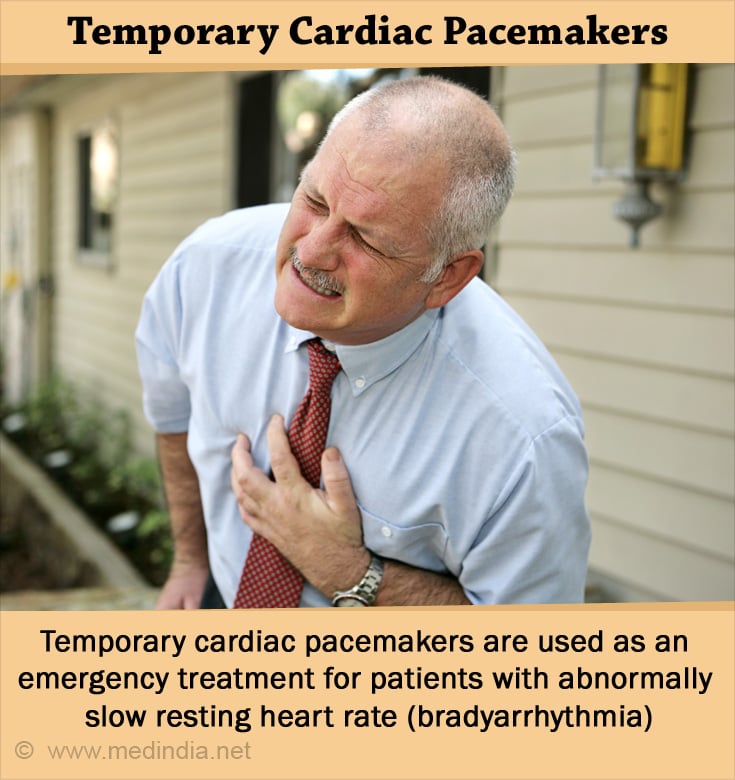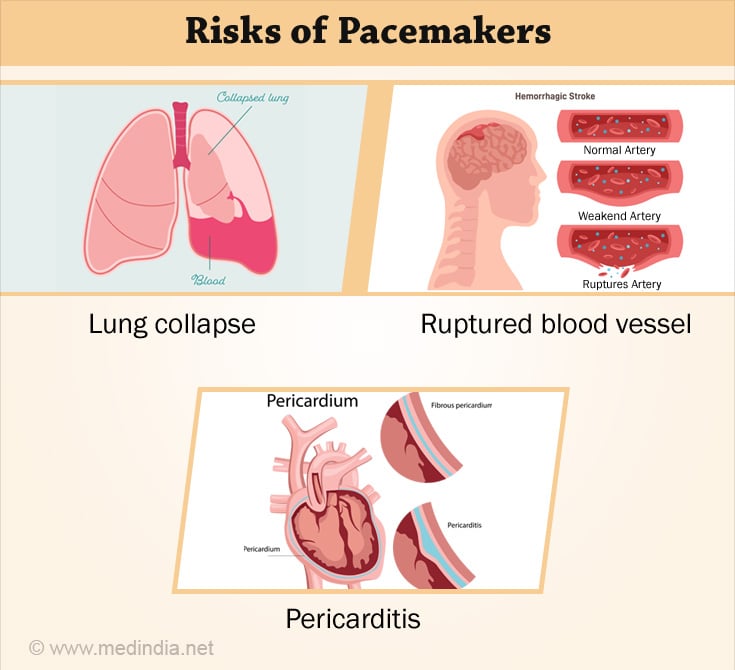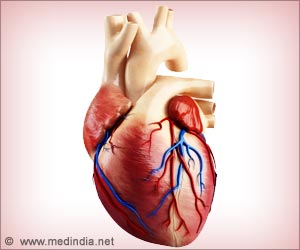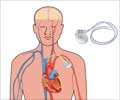- Pacemaker - (https://www.healthdirect.gov.au/pacemaker)
- Permanent pacemakers in older persons - (https://pubmed.ncbi.nlm.nih.gov/10484258/)
- Overview of Basic Mechanisms of Cardiac Arrhythmia - (https://www.ncbi.nlm.nih.gov/pmc/articles/PMC3164530/)
- Structure/Function Relationship in the Sinus and Atrioventricular Nodes - (https://www.ncbi.nlm.nih.gov/pmc/articles/PMC3703519/)
- Development of the pacemaker tissues of the heart - (https://pubmed.ncbi.nlm.nih.gov/20133910/)
- Automated pacemaker function - (https://pubmed.ncbi.nlm.nih.gov/10709691/)
- Telemedicine and cardiac implants: what is the benefit? - (https://pubmed.ncbi.nlm.nih.gov/23211231/)
- Does Pacemaker Implantation After Surgical Aortic Valve Replacement Impact Long-Term Morbidity and Mortality? A Focused Review - (https://pubmed.ncbi.nlm.nih.gov/36252278/)
- Implant-Associated Infections: A Review of the Safety of Cardiac Implants - (https://pubmed.ncbi.nlm.nih.gov/33520485/)
- Pacemaker Types and Selection - (https://www.ncbi.nlm.nih.gov/books/NBK556011/)
- Biventricular Devices - (https://www.ncbi.nlm.nih.gov/books/NBK567773/)
- Leadless Pacemakers - (https://pubmed.ncbi.nlm.nih.gov/27889044/)
- Heart pacemaker - (https://medlineplus.gov/ency/article/007369.htm)
- External Pacemaker - (https://www.ncbi.nlm.nih.gov/books/NBK519567/)
- Surgical Approaches to Epicardial Pacemaker Placement: Does Pocket Location Affect Lead Survival? - (https://www.ncbi.nlm.nih.gov/pmc/articles/PMC2948166/)
- Rate-responsive cardiac pacemakers - (https://pubmed.ncbi.nlm.nih.gov/1995009/)
- Electrosurgery and cardiac pacemakers - (https://pubmed.ncbi.nlm.nih.gov/6630609/)
- Pacemaker insertion - (https://www.ncbi.nlm.nih.gov/pmc/articles/PMC4356861/)
- Implantable Defibrillator - (https://www.ncbi.nlm.nih.gov/books/NBK459196/)
- Pacemaker - (https://www.ncbi.nlm.nih.gov/books/NBK526001/)
What is a Pacemaker?
The human heart has a natural pacemaker in the sinus node or the sinoatrial node, which is a group of cells that trigger electrical signals to stimulate the rhythmic contraction of the heart. In 1958, the first artificial cardiac pacemaker was surgically implanted by Dr. Ake Senning. An artificial pacemaker is a type of cardiac conduction device that is surgically implanted to control and rectify an abnormal heartbeat, with the help of electrical pulses. In the world, there are more than 3 million people with pacemakers and on an average in India, 20,000 patients are implanted with pacemaker devices each year. The pacemaker has a generator that is operated by a 2.5 V lithium-iodine battery and is connected by electrical wires to either one or two leads that are connected to the heart. The generator weighs approximately 20 g and is enclosed in a case that is made up of titanium. The pacemaker is placed under the skin usually just below the collarbone(1✔ ✔Trusted Source
Pacemaker
Go to source).
A pacemaker is normally used to treat arrhythmia of the heart, a condition where there is alteration in the rate and/or rhythm of heartbeats. When the heart beats slowly, it is called bradycardia. Tachycardia is a condition when the heart beats fast. When the heart beats with an abnormal rhythm, the blood may not be pumped into the body at a uniform rate. This leads to fatigue, fainting, or dizziness. A pacemaker tries to rectify the abnormalities in the heartbeat and thus prevents the secondary conditions(2✔ ✔Trusted Source
Overview of Basic Mechanisms of Cardiac Arrhythmia
Go to source).
Cardiac pacemakers are clever electronic medical devices that are implanted to treat arrhythmias in the heart.
The Atrioventricular node (AVN) tranmits electrical activation from the atria to the ventricles in a strictly controlled manner. Additionally, when sino-atrial activation fails, the AVN junctional pacemaker takes over cardiac excitation, acting as a backup pacemaker.
The primary and natural pacemaker of the heart is the sinoatrial node (SAN)(3✔ ✔Trusted Source
Structure/Function Relationship in the Sinus and Atrioventricular Nodes
Go to source).
One type of cardiac implantable electronic devices (CIED) are pacemakers. There is an increasing prevalence of cardiac implantable electronic devices(4✔ ✔Trusted Source
Telemedicine and cardiac implants: what is the benefit?
Go to source). A major complication that can occur after valve surgery is the implantation of a permanent pacemaker(5✔ ✔Trusted Source
Does Pacemaker Implantation After Surgical Aortic Valve Replacement Impact Long-Term Morbidity and Mortality? A Focused Review
Go to source). Permanent heart pacemaker surgery is extremely cost-effective, safe, and straightforward to do(6✔ ✔Trusted Source
Permanent pacemakers in older persons
Go to source).
Cardiac implantations are among the most crucial and life-saving treatments in patient care. The majority of cardiac implantations are performed to repair conduction and rhythm abnormalities in the heart(7✔ ✔Trusted Source
Implant-Associated Infections: A Review of the Safety of Cardiac Implants
Go to source).
Types of Pacemakers
Pacemakers can be distinguished based on the number of leads used and the approach to pacing. Based on the number of leads, the pacemakers are classified as follows:
Single-Chamber Pacemaker
In a single-chamber pacemaker, one lead is connected to the right atrium in cases of sinus node disease or the right ventricle in cases of atrial fibrillation. Single-chamber atrial pacemakers are used when sinoatrial disease causes a slow heartbeat. Though the sinoatrial node does not fire appropriately, there is no problem in the conduction between the atria and the ventricles. On the other hand, the single-chamber ventricular pacemakers are used when the conduction between the atrium and the ventricle is impaired(8✔ ✔Trusted Source
Pacemaker Types and Selection
Go to source).
Dual-Chamber Pacemaker
In a dual-chamber pacemaker, one lead is connected to the right atrium and the second lead is connected to the right ventricle. The wires simultaneously transmit electrical pulses to pace the atrium and the ventricle, thus coordinating the contractions between the 2 chambers of the heart. This device is normally used for patients with heart blocks. If the leads are not appropriately placed, the pacemaker does not function well and there is a recurrence of symptoms(9✔ ✔Trusted Source
Biventricular Devices
Go to source).
Bi-ventricular Pacemaker
A biventricular pacemaker is also called a cardiac resynchronization therapy device (CRT). In this type of pacemaker, electrical pulses are transmitted from the wires of the generator to both the ventricles and sometimes an atrium, resulting in coordination between the 2 ventricles. This type of pacemaker is used to treat patients with refractory heart disease that is associated with dys-synchrony in the ventricles. Bi-ventricular pacemakers are now being explored to treat individuals with the lethal condition of congestive heart failure. Research has shown that reduced morbidity and reduced hospitalization are some of the benefits of using biventricular pacemakers to treat congestive heart failure(9✔ ✔Trusted Source
Biventricular Devices
Go to source).
Leadless Cardiac Pacemakers
This is a recent advance in technology where pacemakers do not have the conventional lead electrodes that are connected to wires. Instead, the pacemaker is the size of an AA battery. However, it needs to be approved by the Food and Drug Administration (FDA) for use in the United States(10✔ ✔Trusted Source
Leadless Pacemakers
Go to source).
Pacemaker Threshold Testing
Pacemakers are monitored for their optimum pacing outputs or thresholds in order to maintain their efficiency. The Autocapture algorithm was the first to be introduced in pacemakers to monitor the pacing threshold in the ventricles of the heart.
There are 2 kinds of pacemakers used only in medical emergencies. They are:
- Transcutaneous pacemakers
- Transvenous pacemakers
They do not serve as permanent pacemakers. Transcutaneous and transvenous pacemakers are both transitory devices(11✔ ✔Trusted Source
Heart pacemaker
Go to source).
An External Cardiac Pacemaker, also known as a Transcutaneous or Artificial Pacemaker, is a medical device that uses electrodes to manage the contractility of myocardiocytes in order to maintain proper heart rate and thus cardiac output. Transcutaneous pacing is used temporarily to treat hemodynamically unstable bradycardia(12✔ ✔Trusted Source
External Pacemaker
Go to source).
Although transvenous pacemakers benefit many adolescent patients, epicardial pacing is still the standard treatment for newborns and individuals with complicated congenital heart disease. Epicardial pacemakers can be implanted by sternotomy, lateral thoracotomy, or subxiphoid technique(13✔ ✔Trusted Source
Surgical Approaches to Epicardial Pacemaker Placement: Does Pocket Location Affect Lead Survival?
Go to source).
The Sinoatrial node (SAN) is the primary pacemaker, with the AVN and ventricular conduction system acting as backup (accessory) pacemakers to ensure repeating ventricular contraction in the event of SAN failure or AV block(14✔ ✔Trusted Source
Development of the pacemaker tissues of the heart
Go to source).
There are two types of pacemaker programming
Rate-Responsive Pacing
The pacemaker adjusts the heartbeat rate based on the activity of the individual. The pacing threshold is established with the help of an algorithm that is present in the computer-based generator. For example, if the individual is exercising, the pacemaker adjusts the heart rate for the activity. The pacemaker assesses the sinus node pulse, the temperature of the blood, and the breathing pattern of the individual(15✔ ✔Trusted Source
Rate-responsive cardiac pacemakers
Go to source).
Demand Pacing
In this condition, the pacemaker adjusts the heart rate if the heart misses a beat or beats too slowly(16✔ ✔Trusted Source
Electrosurgery and cardiac pacemakers
Go to source).
How Does a Pacemaker Work?
The basic pacemaker consists of a battery-operated generator that is covered by a thin titanium box. The generator is connected to the heart by electrical wires with lead electrodes. The lead electrodes monitor the heartbeat by transmitting the signals to the generator. When there is any abnormality in the rate (e.g., bradycardia or tachycardia) or rhythm, the generator detects these changes and transmits electrical pulses to correct this abnormality in the heartbeat.
The computer in the pacemaker’s generator keeps a record of the electrical activity and the rhythm of the individual’s heart. This record enables the doctor to understand the working of the individual’s heart and to adjust the pacemaker to work better for the individual. The adjustments can be made externally without any surgical procedure.
The surgical procedure to implant pacemakers is a minor surgery that lasts for 1 to 2 hours with a risk rate of 1% to 2% in surgical complications. The transvenous surgical procedure is performed with local anesthesia. The wires are first positioned in the heart with the help of imaging techniques before connecting them to the pacemaker that is placed below the skin usually under the collarbone. A small bump is observed in patients at the site of implantation. Extreme motion with the arm, near the location where the pacemaker is inserted, is discouraged for a few weeks. Similarly, heavy lifting is also discouraged for a few weeks. The patients can resume their normal activity in a few days.
Doctors should examine their patients with pacemakers every 3 to 6 months. The battery of a pacemaker lasts for 6 to 8 years following which, surgery should be performed to replace the old pacemaker. Individuals should always carry an information card stating the type of pacemaker inserted and the number of leads used, to show medical professionals or security officials at airports(17✔ ✔Trusted Source
Pacemaker insertion
Go to source).
Pacemaker function automation is a rapidly expanding trend in the pacing business. These features are intended to improve patient safety and quality of life, lengthen battery life, and make pacemaker programming and follow-up easier for medical professionals(18✔ ✔Trusted Source
Automated pacemaker function
Go to source).
Pacemaker Vs Defibrillator
Severe conditions, such as tachyarrhythmias, can be treated with an alternate device known as an implantable cardioverter defibrillator (ICD). The ICD has a defibrillator that delivers shock to the heart muscles to generate a normal rhythm in the heartbeat. In addition, electrical impulses are also delivered to the heart muscles to maintain the steady rhythm. There are 2 types of ICDs: subcutaneous (S-ICDs) and transvenous (T-ICDs) based on where the lead electrodes are located. Patients who do not require pacing adjustments for bradycardia or tachycardia, can be fitted with an ICD. One also finds ICDs coupled with single or dual-chamber pacemakers to generate and manage the normal rhythm of the heart.
The difference between an ICD and a pacemaker is that an ICD can use either low-energy or high-energy electrical stimuli to control arrhythmias of the heart, while a pacemaker uses only low-energy impulses(19✔ ✔Trusted Source
Implantable Defibrillator
Go to source).
Advantages of Pacemakers
Pacemakers have many advantages and some of the uses of pacemakers are listed below:
- Pacemakers maintain a normal heartbeat with a continuous rhythm in conditions where the heartbeat slows down, such as bradycardia.
- Pacemakers coordinate the pumping of atria and ventricles or maintain the coordination between the 2 ventricles.
- Pacemakers prevent arrhythmias in life-threatening conditions such as long QT syndrome.
- People with pacemakers can lead normal lives and use cellphones, microwaves, and other electrical objects as long as they are not in close contact with the region of the pacemaker. They are prevented from working in high-voltage areas, playing contact sports, or being exposed to magnetic resonance scanners, or welding equipment.
- Pacemakers with rate-responsive pacing can evaluate an individual’s rate of breathing, and the temperature of the blood and thus, adjust the heartbeat according to the activity of the individual.
- Temporary pacemakers are used for short-term heart conditions with a slow heartbeat induced by a drug overdose, a heart attack, or a heart surgery. Individuals with temporary pacemakers remain in the hospital until the condition is stabilized or until a permanent pacemaker is inserted.

- Permanent pacemakers are used for long-term heart conditions, such as slowing of the heart rate due to bradycardia or an increase in the heart rate due to tachycardia.
Risks of Pacemakers
The risks of pacemakers are minimal compared with the advantages. Some of the risks after pacemaker surgery include:
- Discontinued, kinked, or pinched electrical wires
- Diathermy (generation of high-frequency electrical current) as therapy during dental surgery or for arthritis may cause damage to the pacemaker.

- Collapse of a lung during surgery
- Rupture of a blood vessel or a nerve during the surgery
- Swelling, infection, intracardiac thrombosis, or bleeding in the region of the inserted pacemaker
- Pericarditis
- A hypersensitive reaction to the medications used during the surgery(20✔ ✔Trusted Source
Pacemaker
Go to source)
 MEDINDIA
MEDINDIA

 Email
Email








